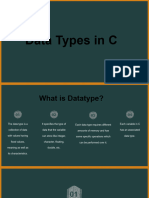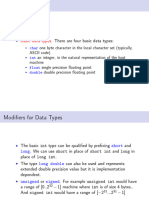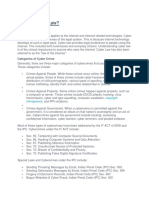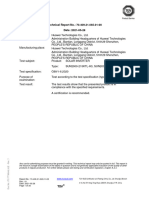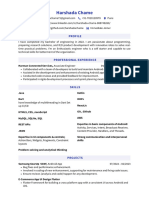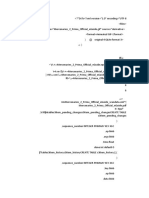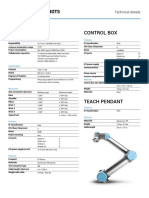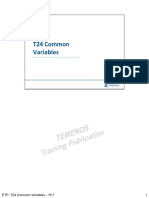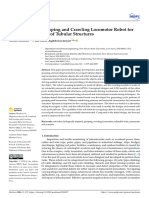0% found this document useful (0 votes)
27 views11 pagesData Types C
The document provides an overview of data types in the C programming language, categorizing them into basic, derived, enumeration, and void data types. It details the memory size and range of various basic data types such as int, char, float, and double, as well as derived types like arrays, pointers, structures, and unions. Additionally, it explains the use of enumeration for named constants and the void type for functions that do not return a value.
Uploaded by
swarnimdhoke20Copyright
© © All Rights Reserved
We take content rights seriously. If you suspect this is your content, claim it here.
Available Formats
Download as PDF, TXT or read online on Scribd
0% found this document useful (0 votes)
27 views11 pagesData Types C
The document provides an overview of data types in the C programming language, categorizing them into basic, derived, enumeration, and void data types. It details the memory size and range of various basic data types such as int, char, float, and double, as well as derived types like arrays, pointers, structures, and unions. Additionally, it explains the use of enumeration for named constants and the void type for functions that do not return a value.
Uploaded by
swarnimdhoke20Copyright
© © All Rights Reserved
We take content rights seriously. If you suspect this is your content, claim it here.
Available Formats
Download as PDF, TXT or read online on Scribd
/ 11



